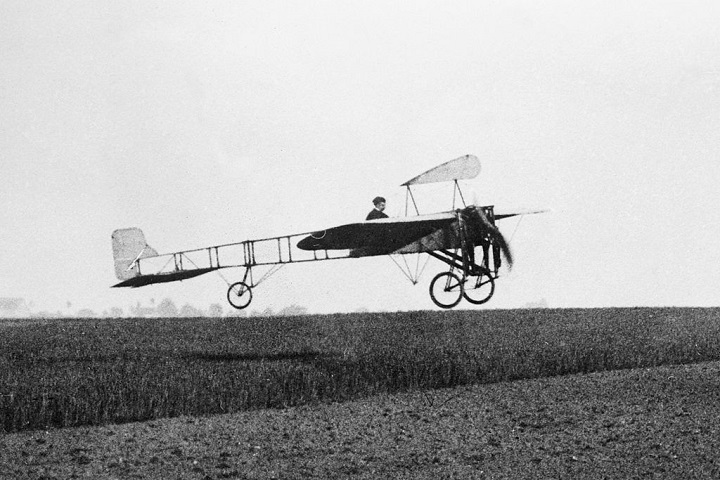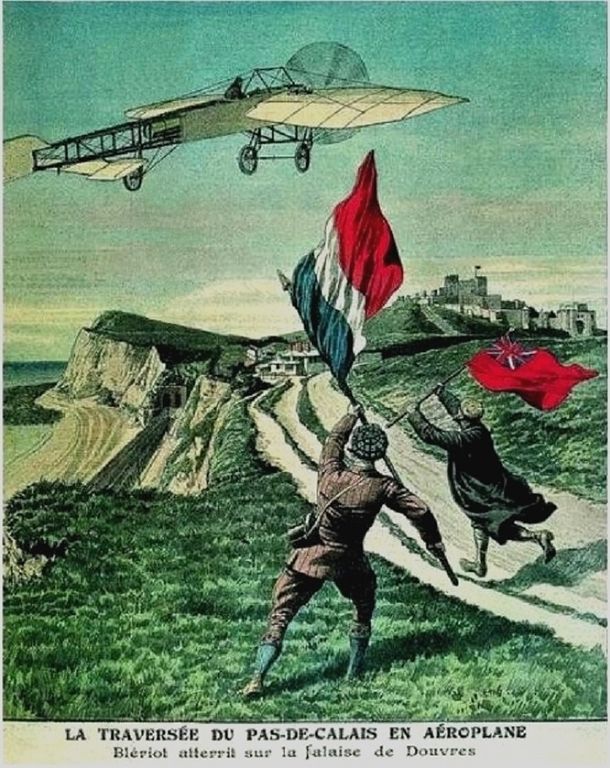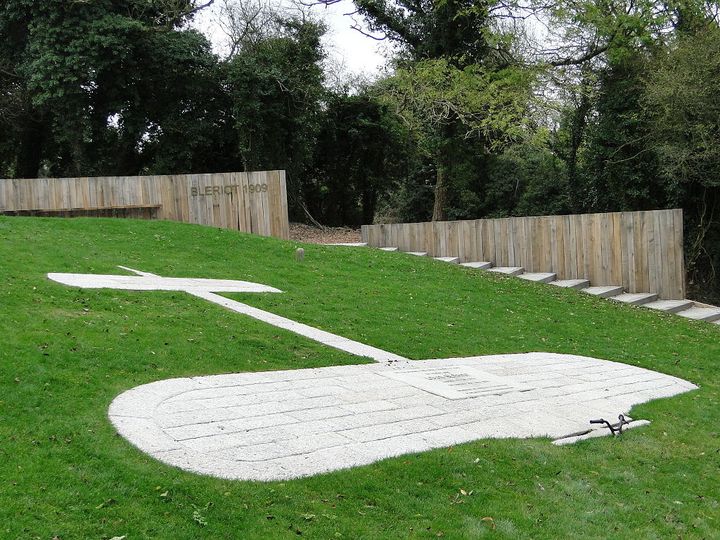
The idea of offering incentive prizes to inspire technological innovation is a time-honored one. As far back as the 16th century, governments have looked to the public and offered prizes for inventions that had beneficial applications. For example, in 1714, the British government established the Longitude Rewards, a system of inducement prizes for a simple and practical method for the precise determination of a ship's longitude at sea.
This eventually resulted in the creation of John Harrison's marine chronometer, for which he was awarded a total payment of £23,065 over the course thirty-six years (1737-1773). However, it was not until the early 20th century, when aviation was emerging as an industry, that the concept truly began to emerge. During this time, entrepreneurs, publishers and aviation enthusiasts offered cash prizes for "firsts", which ranged from a short hop in an airplane to trans-Atlantic flights.
One such first was financed by the British Newspaper The Daily Mail, which launched the English Channel Crossing Prize in 1908. This incentive-based competition pledged to award £500 to the first pilot to fly an airplane across the English Channel, a distance of nearly 38 km (21 miles) from the Calais region of France to Dover, England. After a year with no serious attempts being made, the prize money was doubled to £1,000 and the offer extended to the end of 1909.

Louis Blériot sitting in his Blériot XI at the start of his cross-Channel flight of 25 July 1909. Credit: Smithsonian National Air and Space Museum Archives
On July 25th of that same year, Frenchman Louis Blériot became the first man to make the crossing in a "heavier than air" aircraft - the crossing having been made previously by hydrogen balloons in 1784 and 85. Using a monoplane of his own design - the Blériot XI - Blériot flew from Sangatte, France, to Dover, England, collecting the £1000 prize and also being awarded a supplemental 50,000 francs by the French government.
A successful entrepreneur, Blériot had grown wealthy from the development of the first practical headlamp for trucks, which he then successfully marketed to automotive companies. Having discovered a passion for aviation early in life, he had apparently became inspired to begin experimentation with planes after seeing Clément Ader's Avion III at the 1900 Exposition Universelle.
From that point onward, he devoted his time and money to advancing the science of flight. His earliest experiments involved the creation of ornithopters - flying vehicles that rely on flapping wings - which were unsuccessful. By 1905, and with the help of Gabriel Voisin and Ernest Archdeacon - a two pioneers in the field of aviation - he began working on a series of experimental gliders.

The first Blériot XI conducting a test flight in early 1909. Credit: US Library of Congress
Eventually, these efforts culminated in Blériot and Voisin coming together to create an aviation company - Ateliers d' Aviation Edouard Surcouf, Blériot et Voisin - and the two moved away from gliders to work on powered aircraft. By 1909, Blériot had completed work on the eleventh and twelve iterations of his airplane, a single-seater monoplane and a two-seater. When news of the selected the English Channel Crossing Prize reached him in June, he announced his intent to make the crossing using the Blériot XI.
Blériot had three rivals for the prize, the greatest of which was English-born Hubert Latham, who would be flying an Antoinette IV monoplane, who was favored by both the United Kingdom and France to win. The others were Charles de Lambert, a Russian aristocrat with French ancestry (and one of Wilbur Wright's pupils) and Arthur Seymour, an Englishman who reputedly owned a Voisin biplane.
However, only Latham presented a serious challenge, as both Seymour and de Lambert failed to make any attempts. When Latham did set off from the Calais region on the 9th of July, he succeeded in making it to within 9.7 km (6 miles) of Dover when his aircraft developed engine trouble. He was forced to land at sea and was rescued by ship and returned to France, where Blériot was preparing for his attempt.

The scene at Northfall Meadow, near Dover Castle, after Blériot's hard landing. Credit: US Library of Congress
This took place on July 25th at 4:41 am before a crowd of several thousand spectators. Flying at approximately 72 km/h (45 mph) and an altitude of about 76 meters (250 ft), he set off across the Channel without so much as a compass to guide him. For much of the journey, he relied on a French vessel - the Escopette, which was traveling to Dover - to orient himself. However, in time, he overtook the ship and visibility dropped to zero.
For a full 10 minutes, Blériot flew blind and could not make out a single feature on the horizon. Eventually, the English coast appeared and wind increased, blowing him east of his intended destination. Altering course, he followed the line of the coast until he was about a mile offshore and spotted Daily Mail journalist Charles Fontaine, who then directed him to a patch of land at Northfall Meadow, close to Dover Castle.
Making a heavy landing amidst strong winds, he was able to bring the plane in without injury, though it did cause damage to both the plane's undercarriage and one blade of the engine's propeller. His total flight time had been 36 minutes and 30 seconds. Fontaine then drove Blériot back to Dover harbor, where he was reunited with his wife and a crowd of cheering people and photographers.

French Commemorative poster, which reads: "Flight across the English Channel an airplane. Blériot landed on the coast at Dover." Credit: Public Domain
In addition to the prize money, Blériot became a hero for his actions, which were celebrated on both sides of the Channel. His Type XI monoplane also became a best seller, with the designs being produced by both his own company, under foreign licenses, and amateur enthusiasts. Blériot’s original Type XI is currently in the possession of the Musée des Arts et Métiers in Paris, which has a special exhibit on Blériot’s flight.
On top of all that, in 2009, for the centennial of the Crossing, a French pilot named Edmond Salis recreated the flight using a replica of his monoplane design. Beginning at Blériot Beach (which was named after him) in the Calais region, Salis followed the same course and landed on a grass airstrip at the Duke of York's Royal Military School, close to where Mr Bleriot crash-landed. Mr Bleriot's grandson was on hand to watch the aeroplane land.
Though they may seem humble by today's standards, challenges and inducement competitions like these have paved the way for things like the $10 million X Prize, the DARPA Grand Challenge for autonomous robotic vehicles, and NASA's Centennial Challenges for space-related technologies. And with the age of the internet, and the rise of such things as crowdsourcing and crowdfunding, the ability to connect people with ideas and know-how to those who have the investment capital has become even easier.
Basically, we should expect more of these kinds of prizes, and the benefits that come from them, in the coming years.
Top Image: The Blériot Memorial on the site of his landing near the cliffs above Dover in Kent, England (Wikipedia/Pubic Domain)
Sources:
- news.bbc.co.uk/2/hi/uk_news/8165110.stm
- www.nap.edu/openbook.php?isbn=NI000221
- www.nbcnews.com/id/5191763/#.VUEPnJNai-c
- blog.nasm.si.edu/archives/bleriots-cross-channel-flight/
- www.xprize.org/?gclid=CN6jiaqanMUCFQiUfgod1agAMA
- www.keionline.org/misc-docs/research_notes/kei_rn_2008_1.pdf
- www.flightglobal.com/pdfarchive/view/1913/1913%20-%200387.html








